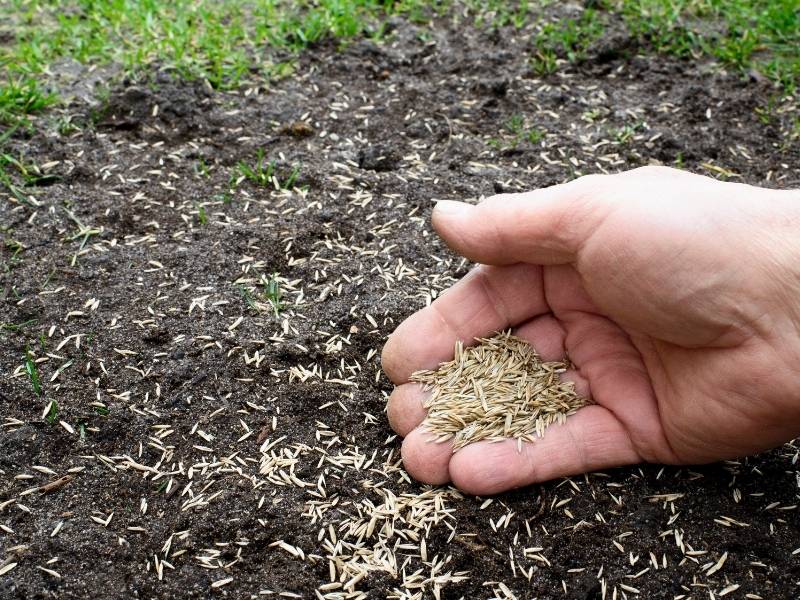If you are a person of aesthetics, there is no way you can stand the sight of a tired and patchy-looking lawn. By overseeding a lawn, you can transform it into a vigorous, healthy yard in no time. Professionals know about its many intricacies, which is why it is best to leave the job to them. However, it would help if you also had a fair knowledge of what overseeding means and how it can benefit your yard.
Overseeding helps your lawn regain its lost luster, and fill in the brown and patchy gaps while making it look plush and green. It improves soil nutrients and prevents soil erosion which shortens the lifespan of the grass. If you see patches of dirt around your lawn, you’re in the right place. Here is a great guide to help you understand how to not overseeding a lawn.
The Essential Guide to Overseeding Your Lawn

① Select the Right Variety of Seed
Do you want to prevent soil erosion in your garden, fill in the empty patches, or prevent an insect infestation of your grass? The answers will determine the kind of grass seed you need for your lawn to help you avoid overseeding.
② Seed According to Timings So You Never Overseeding a Lawn
Once you have decided which kind of grass seed works for your lawn, decide on the timing. Some grass seeds germinate well at the beginning of summer, while autumn is suitable for others. The temperature and rain conditions of your area will determine your grass’s growth rate after the overseeding. Additionally, the ideal time is to plant the seeds is when the soil can retain warmth and moisture.
③ Prepping the Lawn
It is essential to prep the lawn before you start the process of overseeding. Mowing is a good idea, as it eliminates any extra growth. When you rake the soil, it helps the new seeds germinate faster while giving them adequate nutrients. Raking the soil also makes the soil loose so that the new seeds can take root without much exertion. Of course, they must also get exposed to rainwater and sunlight.
④ Choosing the Grass Seed
Choosing the right grass seed is crucial for not overseeding. If you are not sure, you can also opt for a soil test to ensure the best choice of seeds for your lawn or garden’s soil type. Grass seeds don’t need to be expensive to sprout well. However, you must take care of other problems in your lawn before spreading them.
⑤ Choosing a Spreader
Spreading the seeds through a spreader ensures a more even distribution of the grass seeds rather than by doing it manually and ensuring not overseeding. In fact, a broadcast spreader is ideal if you have a large lawn. Packaged grass seeds also provide you with instructions on their packet about the overseeding rate. Or, you could hire a professional to do it for you.
⑥ Chemical-free Fertilization
Only use good quality, chemical-free fertilizer for your lawn after the overseeding process. Many fertilizers contain certain chemicals or pre-emergent herbicides meant to curb the growth of weeds. However, it might slow down or completely prevent the seeds from germinating. Check the nutrients on the packet of the fertilizer. Ideally, it should contain nitrogen and phosphorus but ensure that the run-off will not affect any water body near your home.
⑦ Water Schedule for Healthy Growth
In the first few weeks of overseeding, your lawn needs a lot of moisture. Then, water your lawn twice a day in the first four to five days after overseeding. Afterward, water the lawn heavily once a day for the next four to five days. After that, consistently water your garden on a normal schedule until it attains its lush, green look.
With the right procedure of overseeding a lawn, you will start noticing a positive change in two to three weeks. Within a brief period, you will have a wonderful lawn.
Here’s to your beautiful lawn as we all look forward to the coming seasons. If you have any suggestions to add, please do so in the comments below. Also below are links to more articles about ALL things DESIGN for your home or business.
Images Courtesy of Canva.
Other Posts You Might Enjoy:
7 Quick Fixes for an Ugly Lawn
8 Ways to Increase the Value of Your Home





